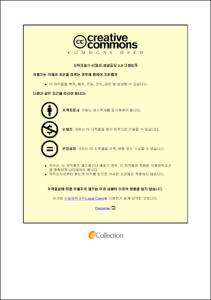굴 및 굴 자숙액의 효소가수분해 최적화와 Maillard 반응에 의한 굴소스 제조 및 제품의 특성
- Abstract
- Oyster is called as "milk of sea" for its balanced and abundant nutritional composition, and also is abundant in taurine, glycogen and cellenium. Because of its special flavor and taste, it is used for manufacturing natural sauce. Recently, consumers have more interest in natural sauce because of their diverse preference and its special taste.
This study tried to investigate optimal condition of Maillard reaction, hydrolysis, and aging, and to characterize hydrolysate of oyster and oyster cooking drip for the manufacture of oyster sauce. For the hydrolysis, Acalase, Flavourzyme, Neutrase, and Protamex were used. The optimal conditions for the highest enzyme activity w ere given by their manuals. Under the best condition of each enzymes, they reacted with the homogenized oyster and oyster cooking drip for 0.5, 1.0, 1.5, 2, 4, and 6 hours.
The degree of oysters’ hydrolysis was 13.2±0.1%. But, in the case of using enzyme, hydrolysis degree sharply increased after 2 hours. After 8 hours, hydrolysis degree was 36.9~40.5%. Protamex showed 27.4±0.4% of hydrolysis degree in 2 hours. The degree of oyster cooking drop hydrolysis was 42.7±0.1%. The highest hydrolysis degree was 72.1±0.1% in case of using protamex. In the case of oyster, it had a similar tendency of all enzymes. Otherwise, the hydrolysate of oyster cooking drip had a difference among the enzymes.
For the optimization of Maillard reaction condition for manufacturing natural seasoning using oyster and oyster-cooking drip hydrolysate, it was judged by browning degree and pyrazine contents which were flavor components occurred at food process of heat treatment. Hydrolysate and sugar reacted according primarily to type of sugar - glucose, xylose and fructose. Xylose was selected as the best sugar of browning reaction. In the case of sugar contents, the content of 1% xylose was selected as appropriate condition. According to the reaction with different temperature from 60 to 120℃, browning degree and pyrazine contents had increased as temperature went high over 60℃, but at 120℃, the reactant produced nasty smell. As a result, reaction at 100℃ was the best condition for the browning. And in accordance with different reaction time, after 6 hours, there was no change in pyrazine contents and browning degree. Therefore, to manufacture natural seasoning source, it was optimal to react oyster and oyster-cooking drip hydrolysate with xylose for Maillard reaction at 100℃ for 6 hours with hydrolysate of oyster and oyster cooking drip.
There was standardization of aging using a selected Leuconostoc mesenteroides and Saccharomyces cerevisiae. It was added to a variety spice and seasoning based on the aging solution, and then oyster sauce of prototype 2 was produced. Prototype 2 was evaluated as general composition and sensory test. Through the sensory test, it was evaluated the same as commercial oyster sauce. Also, tar color and preservatives were not detected. It can be a foo product to replace imported oyster sauce.
- Issued Date
- 2018
- Awarded Date
- 2018.2
- Type
- Dissertation
- Publisher
- 부경대학교
- Affiliation
- 부경대학교 대학원
- Department
- 대학원 식품공학과
- Advisor
- 양지영
- Table Of Contents
- Ⅰ. 서론 1
Ⅱ. 실험재료 및 방법 7
1. 재료 7
2. 시약 7
3. 일반성분 9
4. 적정산도, 휘발성 염기질소 및 아미노태 질소 9
5. 무기질 및 중금속 9
6. 엑스분 질소, 유리아미노산 및 taste value 10
7. 관능검사 10
8. 굴의 전처리 조건 11
9. 굴 및 굴 자숙 농축액의 효소가수분해 반응 11
10. 굴 가수분해물을 이용한 Maillard reaction 13
11. Maillard 반응물의 갈변도 및 pyrazine 함량 측정 15
12. Maillard 반응물의 관능평가 15
13. Maillard reaction 반응물의 숙성 18
14. 시판 굴소스의 물리화학적 특성 18
15. 굴소스 제조를 위한 배합비 최적화 20
16. 굴소스 제품의 식품영약학적 특성 21
17. 통계처리 21
Ⅲ. 결과 및 고찰 23
1. 생굴 및 굴 자숙액의 일반성분 및 중금속 함량 23
2. 굴의 전처리 조건에 따른 미생물 분석 25
3. 굴 및 굴 자숙액의 가수분해 특성 28
3-1. 굴과 굴 자숙액의 가수분해도 변화 28
3-2. 가수분해시간에 따른 굴 및 굴 자숙액의 휘발성염기 질소와 pH 변화 31
3-3. 굴 및 굴 자숙액 효소가수분해물의 유리아미노산 함량 37
4. 굴 가수분해물을 이용한 Maillard 반응의 최적화 39
4-1. 당 종류에 따른 갈변도 및 pyrazine 함량 변화 39
4-2. 당 함량에 따른 갈변도 및 pyrazine 함량 변화 43
4-3. 반응온도에 따른 갈변도 및 pyrazine 함량 변화 45
4-4. 반응시간에 따른 갈변도 및 pyrazine 함량 변화 47
4-5. 제조된 굴 가수분해 Maillard 반응물의 관능평가 49
5. 굴 가수분해물의 숙성 pH, 산도, VBN, amino-N 변화 53
6. 시판 굴소스의 일반성분 55
7. 시판 굴소스의 점도 및 전단응력 57
8. 시판 굴소스의 중금속 62
9. 시판 굴소스의 색도 64
10. 시판 굴소스의 유리아미노산 및 taste value 64
11. 시판 굴소스의 향기성분 67
12. 굴소스 시제품의 최적화 74
12-1. Prototype 1에 의한 시판 굴소스 제품과의 묘사 분석 75
12-2. Prototype 2에 의한 시판 굴소스 제품과의 묘사 분석 75
12-3. Prototype 2 굴소스 제품의 성분분석 80
Ⅳ. 요약 93
Ⅴ. 참고문헌 95
- Degree
- Doctor
- Files in This Item:
-
-
Download
 굴 및 굴 자숙액의 효소가수분해 최적화와 Maillard 반응에 의한 굴소스 제조 및 제품의 특성.pdf
기타 데이터 / 896.14 kB / Adobe PDF
굴 및 굴 자숙액의 효소가수분해 최적화와 Maillard 반응에 의한 굴소스 제조 및 제품의 특성.pdf
기타 데이터 / 896.14 kB / Adobe PDF
-
Items in Repository are protected by copyright, with all rights reserved, unless otherwise indicated.